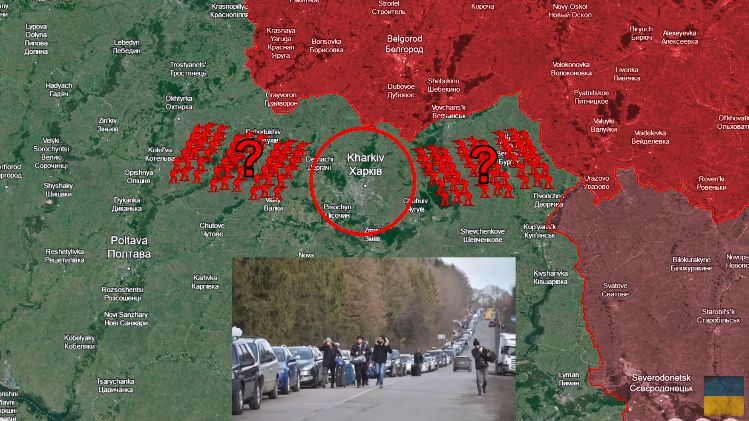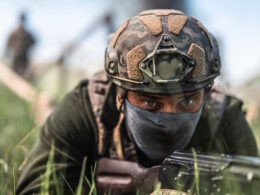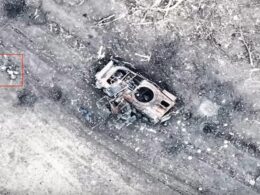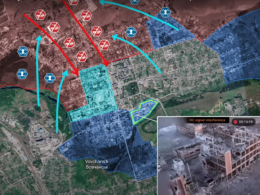In recent days, rumors have flourished everywhere about an alleged Russian plan intended to capture the city of Kharkiv in a potential new spring-summer Russian offensive. In addition to Vladimir Putin's statements about a sanitary zone, some senior Russian officials anonymously reported further details of a possible plan for an encirclement operation in Kharkiv, aimed to capture the city without destroying it, employing a contingent of 300,000 Russian troops.
As an additional indicator, Ukrainian authorities recently reported that Russian forces have begun to strike Kharkiv with a new type of guided bomb called UMPB D-30, which is a glide bomb evolution with improved characteristics.
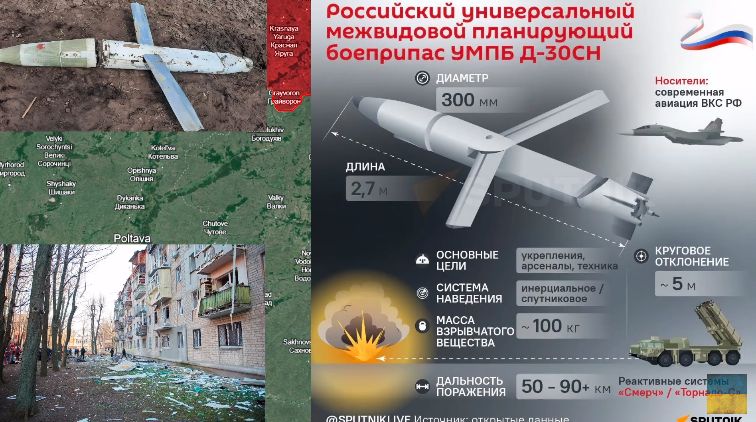
Each munition consists of a unified module with folding wings, a guidance unit, a jam-resistant satellite receiver, and a rocket booster or turbojet in the tail that would give it an estimated combat range of 90km. These improvements bring them closer in accuracy and maneuverability characteristics to a cruise missile at a fraction of the cost.
Ukrainian authorities have described the reported use of this new glide bomb over civilian population areas as an attempt to terrorize the civilian population.
Ukrainian authorities and military analysts have stated that, for the moment, there are not enough indications about the creation of such a large force that could be aimed at encircling the city. And the various statements and actions seem more like information operations in an attempt to destabilize Ukrainian authorities, to force the commitment of additional resources in this direction, as well as to create disruption among the civilian population.
First of all, various Ukrainian analysts evaluated that even a force of 300,000 troops would probably be insufficient to attack and encircle Kharkiv, and they estimated that Russian forces would need at least half a million soldiers.
Kharkiv, with a population of almost a million and a half people, is Ukraine's second-largest city, which means that the city is home to many more high-rise buildings, factories, and industrial zones that can be used as powerful fortifications.
For context, it took Russians 80,000 troops and 10 months to take Bakhmut. Kharkiv is 10 times bigger than Bakhmut by size and 20 times bigger than Bakhmut by population and the number of high-rise buildings.
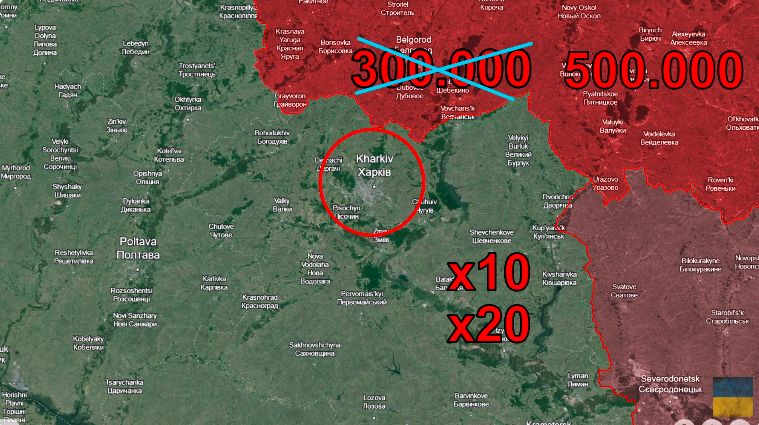
Interestingly, the estimated figure of half a million soldiers is, in fact, higher than what Russia currently has deployed along the entire front length.
Secondly, even assuming a possible additional mobilization in Russia, preparing this new force and its logistics for early spring or summer seems unrealistic.
A very relevant Ukrainian military analyst has detailed how Russian forces might approach an advance on Kharkiv.
Firstly, an advance from the west would have to necessarily face two crucial defensive nodes, Okhtyrka and Bohodukhiv, which belong to the Kotelva - Valky line. In addition, a great number of new defensive lines have been built throughout the whole Kharkiv oblast in recent months.
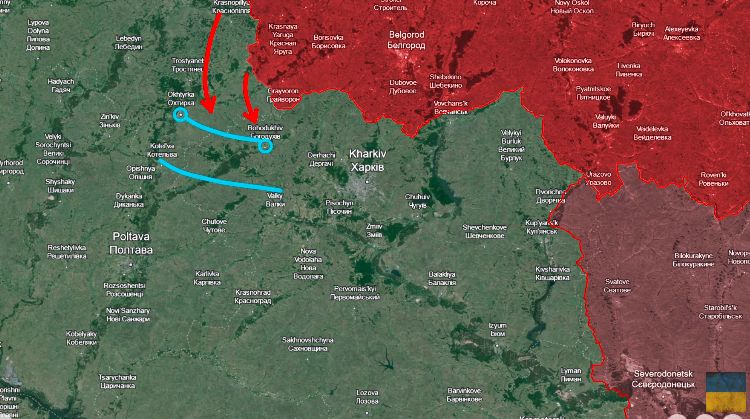
Secondly, the allegedly Russian plan explicitly indicates an encirclement of the city, and the reason for that is that Russian would like to avoid much harder urban fighting, particularly in such an extensive city.
A Kharkiv encirclement would only be realistic if the Russian forces managed to advance further west of the Oskil River and at least reach the Chuhuiv - Pervomaiskyi line, an objective they have been unable to achieve so far, despite countless attempts to advance in the direction of Kupiansk.
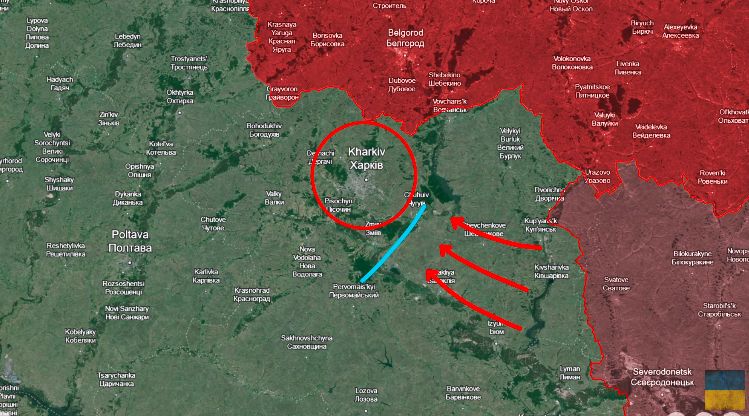
As I analyzed in a previous video, an advance from the northern part of Kupiansk is quite challenging due to the funnel formed by the Siverskyi Donets and Oskil rivers, which in practice forces an attack to face two solid defensive lines in succession.
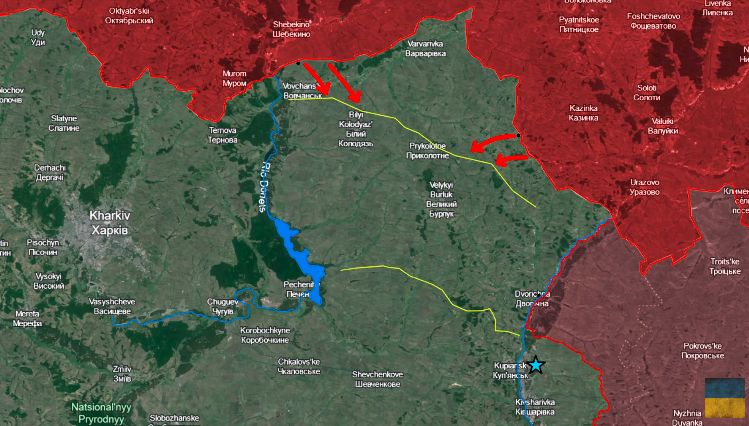
Finally, another critical challenge for the Kremlin would be securing the southern flank of such a potential offensive.
As an alternative, Russian forces could adopt a third vector precisely from the south only if they could reach Izium beforehand. From Izium, they could both compromise Ukrainian resistance east of the Oskil River and advance toward Kharkiv from the south. However, the prospects of seizing Izium seem unrealistic to accomplish in the short or medium term.
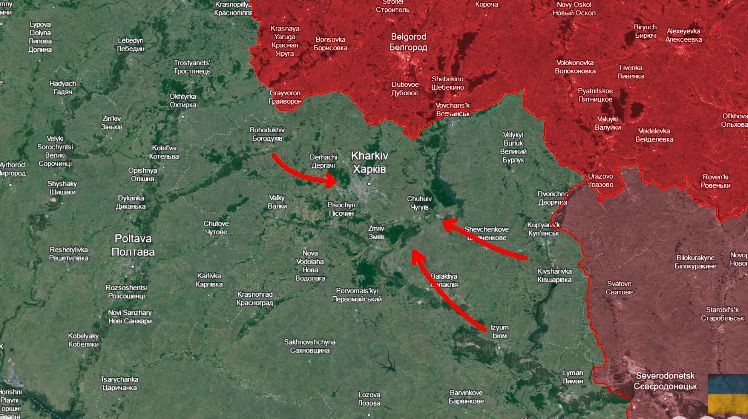
Similarly, the Institute for the Study of War states that a Russian operation to encircle Kharkiv would be highly ambitious, requiring long advances across open terrain unseen since the full-scale invasion began. The Institute Study of War analysts believe that if Russia launches an offensive in late spring-summer 2024, it will likely focus on another direction, most probably to the western Donetsk region.
Overall, Ukrainian analysts and militaries, including their Commander-in-Chief Oleksandr Syrskyi, advocate not to overreact to the situation while continuing with preparations for any circumstance that may occur in the medium or long term.
As of today, there are no facts and developments on the front line that could trigger an advance toward Kharkiv in the short term. On the other hand, the rumors and Russian-sourced articles aim to create uncertainty among the civilian population and undermine international support for Ukraine. Let's hope the months of preparation of the Ukrainian forces in the whole Kharkiv region will allow them to face any Russian offensive threat in the future with full assurance.
In our regular frontline report
, we pair up with the military blogger Reporting from Ukraine to keep you informed about what is happening on the battlefield in the Russo-Ukrainian war.
Related:
- [Russia's rumored assault on Kharkiv: assessing the threat]
- [ISW: Russia may focus its forecasted offensive in one operational direction in upcoming months]
- [Russian attack injures 7 people, including 3 children, kills one man in Kharkiv Oblast]
- [Frontline report: Why Kupiansk matters, Russia's next major offensive target]
- [Russian attacks on Kharkiv Oblast kill at least three civilians this morning]
- [ISW: Russian forces captured Krokhmalne in Kharkiv Oblast]
- [Intense shelling strikes Kharkiv: 17 wounded, among them 9 children]

